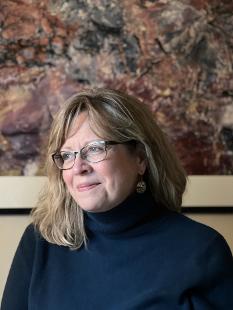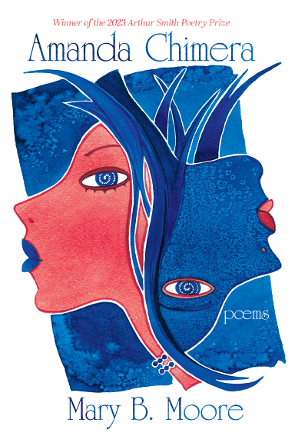Book Review
This summer, 2024, many of us in Appalachian circles have been just about apoplectic over a certain presidential candidate choosing a certain Ohio Senator—who claims to be Appalachian—as his running mate. I jokingly refer to this Appalachian wannabe as JD Voldemort. He who shall not be named. I honestly don’t want to call him out here and give him any further air time. And there’s a slim chance someone reading this review might be offended that a bunch of Appalachian scholars and writers and poets are being big ol’ mean gatekeepers. And it is, indeed, a perennial question: Who gets to claim Appalachia as their place? For an answer, read any number of essays, memoirs, novels, and poetry collections, from decades of publishing about and out of Appalachia. Also there are many recently published articles and books exploring perspectives on Appalachia, as well as on political opportunism. Folks are talking in new ways about the traits and cultural lineage which make a person Appalachian, the varied manifestations of what it means to be Appalachian. So perhaps counterintuitively the conversation has become generous. We seem to be entering a zeitgeist during which we expand “big tent”Appalachia vs. further enabling the small-minded, narrow stereotypes that weigh us down. But there are still complex considerations.
Poet Mary Barbara Moore isn’t from here. Let’s get that said. She’s from California, which might seem anathema to Appalachia. Newsflash: It’s not. Actually no place is anathema to the Mountain South. There are so many connections and intersections between varieties of people from every place. Appalachian people have historically moved away to shape communities from coast to coast. And people from every corner of the globe have come to consider Appalachia home. If we need to accept Moore literally, geographically, she has been a resident of Appalachia for some years now, as a long-time professor at Marshall University in West Virginia. She’s retired now, yet she still lives in West Virginia. I’ve always assumed she feels at home in the Mountain South.
Moore is definitely a fine literary citizen and supports her fellow poets throughout the region. She has charmed many readers in Appalachia with her work, and she continues to give fabulous readings and presentations at Appalachian venues, though travel has become a little difficult for her. All this is to say that Mary Barbara Moore is one of us. But—if we need reasons—why is she one of us? How does her new collection Amanda Chimera fit into Appalachian literature? And by exploring her work, how do we extend the mantle of “Appalachian” to other poets, novelists, scholars, editors, publishers, artists, living inside and outside the geographical boundaries of Appalachia? The region is undoubtedly changing from an influx of retirees—many of whom are returning after a career elsewhere—from climate change, from economic growth, and especially from our youth—who are finding innovative ways to remain in the mountains rather than out-migrating like prior generations. Moore is a mature poet just now gaining serious traction, and entering her place in the Appalachian canon.
I first discovered Moore when she won a chapbook competition from Emrys Foundation, in Appalachian South Carolina. I was absolutely smitten. Parts of this chapbook are included in Moore’s new collection. So I have selfish reasons for embracing Mary Barbara Moore in this review and in my reading life. Her poetry enhances my own version and view of my region and my vocation at large—Poetry, with a big “P.” I’m glad for her energy and presence in our genre. Her writing life enhances our regional literature, raises our standards, brings attention to the variety of cultural expressions possible in the mountains. Her publishing “homes,” including Emrys, have ties to Appalachia. Her prior collection Dear If was published by Orison Books, out of Asheville, North Carolina. Now her most recent collection, Amanda Chimera, is freshly out from Madville Publishing, a press under the helm of Kim Davis. Madville resides physically in Texas, of all places, but has published quite a cadre of Appalachian writers to add to its catalog. I’m a press mate with Moore, and I love that Amanda Chimera won the Arthur Smith Prize from Madville. What a boon to the press! And what a great collection to honor the work of Art Smith, who lived and taught and wrote in Knoxville, one of the largest cities in Southern Appalachia. There are many connections here.
I’d prompt all kinds of readers here to invite Mary Barbara Moore’s work onto your shelf for reasons beyond these considerations, though. Amanda Chimera is a fascinating collection, strange and wonderful. Its intensity and buoyancy of language will entrance any savvy reader. Appalachian readers are known for our love of cadence, unusual rhythms, and language. The subject matter is also timely for conversations we’re having right now about human biology, bodily agency, and gender fluidity. In one of the most provocative poems, “The Powers of X and the Rule of E,” the persona Amanda considers:
we’re all female
first anyway: the clitoris
turns penis. Is, is,
they both end:
through their pairing
we come to be.
Amanda, is our “chimera,” a woman who physically, literally contains the genetic remnants of her twin, called Gloria. Gloria is “sister, demon, twin.” Amanda feels that Gloria haunts her.
How can this collection not resonate as Appalachian? We have conversations about who belongs, about how to share our region with newcomers, and about how our region fits into the larger cultural landscape and nation. Do we not feel haunted? There is a cultural framework already in place in Appalachia to admire what’s strange and wonderful, that which haunts us, what’s a little bit off plumb, what’s queer and also “quare”—as my ancestors used to call folks who don’t quite fit. I came to see, as I read this collection over and over, that the concept of “chimerism” fits all of us in Appalachia. We are a place of incessantly fluctuating Venn Diagrams, where most of us overlap with another culture—global, national, regional. We identify as salt-of-the-earth though we exist in economic boom times in some Appalachian places. We are more educated per capita than any time in history, yet more than ever we want to maintain our working-class demeanor and humility. We sound now as if we are from everywhere and anywhere, though we code shift at home into phrases we know contain poor grammar—and we are happy for the relief from propriety! We live in a place which we love though we are heartbroken by many of its motivations and distractions. We are a place of walking chimeras, through and through.
A savvy reader will find in this collection puns and fun turns of phrase, wit and science, experimentation in rhyme and prosody. Moore excels
in wit and charm of form and in an often aria-like cadence. In essence, here is a poet at the top of her craft.
In the collection, Amanda is made up genetically and physically—and most important emotionally—of remnants of her twin, Gloria, whom she absorbed in utero. An often misunderstood rarity, chimerism happens when one embryo or zygote is subsumed into the body of the only surviving twin. The DNA is mingled. No one really knows how frequently “vanishing twin syndrome” happens. But we should be thrilled that Mary Barbara Moore’s fascination with this congenital happenstance led her to write Amanda Chimera.
In the opening poems, Moore explains the condition so brilliantly. But the reader will also be caught up in the chimerism of language, between common-speak and breath-stopping musical phrases:
We still yearn
for our lost halves,
lean toward each other
across the abyss,
the difference.
A savvy reader will find in this collection puns and fun turns of phrase, wit and science, experimentation in rhyme and prosody. Moore excels in wit and charm of form and in an often aria-like cadence. In essence, here is a poet at the top of her craft. But there’s nothing here that isn’t perfectly balanced with the earnest subject matter:
Lonely only girl,
looking for kin,
I had gene-seers
read me, and hello,
they found you, lost twin
who spirals inside,
me and not me—//
When is one, two,
two, one?
Which is you
when we’re both also me?
I can never seem to explain to non-Appalachians that one identifying trait of Appalachians is that we almost continually wonder about “other.” Who is “other?” we wonder. Moore phrases these questions about Appalachian culture, though her book isn’t intended to be a metaphor for our “otherness.” So many lines in the poems will resonate with Appalachian readers, who see ourselves sharing the space of “self.” Amanda describes “So many selves / nesting in the between.”
Again, I don’t imagine Mary Barbara Moore intended all of this metaphorical experience I’ve had with her book, in which I see myself as Amanda, richly imprinted with the turmoil of Appalachia’s complexly dark history and also its hidden grandeur. Her collection hits me viscerally. Turning these pages, I often feel a familiar pang as the monster twin who never was good enough. As Amanda considers Gloria, who is part of her own body, her identical match, she ponders, “we might be antonyms.” The push and pull, tug and warp that many of us know in Appalachian life is written so intimately in the play between characters, and in the Sturm und Drang of language throughout the book.
Scholar Helen Lewis argued that Appalachia was colonized, that our region fits within the broader understanding of “colonialism,” and that our post-colonial story has not been yet written because Appalachia has been so insidiously “absorbed” into the larger culture. We are a discrete geographical and even “ethnographic” region, though diversity is resilient here. We feel ourselves haunted by the cultures we’ve absorbed and always sense. Or we are the haints, the supposedly not viable force which once pioneered this nation into being. We assimilate and then code shift. We are predominant and always misunderstood in the news, all the while we are ignored, a spiraling chimera in the landscape of America. Amanda is colonized by, enraptured with, inextricable from Gloria, the glorious yet silent, hyper vigilant “other,” who must be reckoned with. Amanda Chimera should be on Appalachian bookshelves, if only to test the friction and weigh the possibilities of ourselves, the offspring of the initial e pluribus unum—Out of many, one.

Susan O'Dell Underwood taught creative writing and Appalachian literature at Carson-Newman University for 33 years. Her novel, Genesis Road, won the Tennessee Arts Commission Grant. Besides two chapbooks of poetry, she has published two full-length collections, The Book of Awe (Iris Press, 2018) and Splinter (Madville Publishing, 2023). Her poems, short fiction, and essays can be found in a variety of journals and anthologies, including Ecotone, Oxford American, and A Literary Field Guide to Southern Appalachia. She is married to artist David Underwood and lives in East Tennessee.

